- Joined
- Nov 2, 2008
- Messages
- 21,929
I don't want to gum up Images with form chatter but just want to show a visual for a commonly missed concept that's more obvious in the extremes (and yes, people argue about this too, but go study elite javeliners). By the time any of these guys' X-step is touching the ground, they are already "falling" toward the earth and just carrying that momentum into the plant stride (or further accelerating with the drive step). So some of the effect is just what happens when you use your legs to walk or run, and some of it is actually "falling" form an airborne move thru the X-step into the plant in aggressive posture.Adding this from another thread for easy future reference since I didn't see it here:

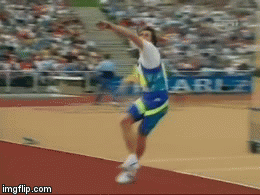
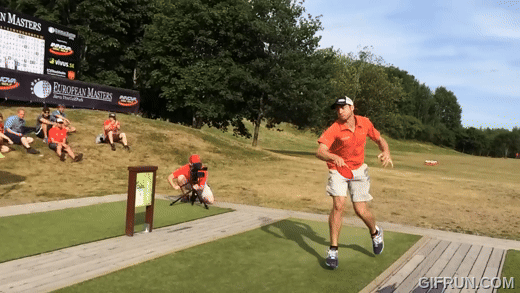
This is why chose the crow hop when running vs walking up. It feels like it forces me to to commit to the forward momentum more than a regular X step which leaves open more possibility of keeping some weight back even when having forward speed.I don't want to gum up Images with form chatter but just want to show a visual for a commonly missed concept that's more obvious in the extremes (and yes, people argue about this too, but go study elite javeliners). By the time any of these guys' X-step is touching the ground, they are already "falling" toward the earth and just carrying that momentum into the plant stride (or further accelerating with the drive step). So some of the effect is just what happens when you use your legs to walk or run, and some of it is actually "falling" form an airborne move thru the X-step into the plant in aggressive posture.
View attachment 336204
This is Zelezny, who still holds the distance world record:



See previously Simon Lizotte and Drew Gibson when asked to throw hyzer, "flat," or anhyzer.
In Gannon Buhr's form at long distances we also see:
Swinging upward nose down, another challenge to "flat" form theory [1 2], and whole-body posture controls swing plane & trajectory.
View attachment 337268
Yeah I noticed the same - I'm not sure this always happen in pros, but there does seem to be a pattern where their "true" release angle is more likely an actual anhyzer at maybe 80% or less distance. But once they get closer to full mashes, they're actually posturally swinging somewhat on hyzer, and either the wrist action or disc is just quickly going into some kind of hyzerflip with a pretty overstable disc that flexes back.I find it interesting that it appears his Anhyzer angle severity decreases noticeably as power increases.
I can relate to it in two ways:
1.) I still cannot find a way to feel as powerful throwing at significant anhyzer angles, so as power ramps up, that angle is simply not available to me.
2.) I find that the mega flex shot shape that requires a large anhyzer angle to be more commonly useful with putters/mids in actual play.
Or is it that Im seeing things and that is not in fact a valid observation?
Yeah, I think launch/trajectory angle also modifies how most people appear posturally in transition and I think that Barela shot was pretty low iirc. However, I do think there are a couple differences in how Buhr loads the rear side. This is one of my favorite balance puzzles in disc golf and I might understand it now.What about this, not a problem if you know how to properly transfer the weight forward from here? Lot's of pros in this position usually only have elbow and down crossing the line but maybe it's also because he's throwing a somewhat high launch angle.
View attachment 337358View attachment 337359
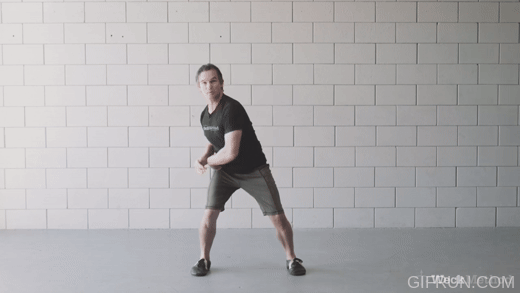
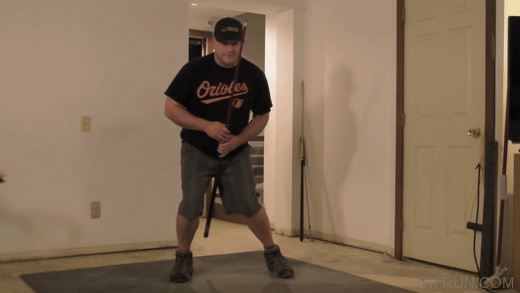
Simon's anhyzer here looks like a different grip alignment compared to his others.I was curious about the angulation of the arm from ~wrist to elbow entering the hit and thought some would find this interesting.
If you go back through the OT montages and look at lower power shots, the Anhyzer angle looks much more like Brinster's here. But when Simon and Drew go for max power they're basically swinging on shallow hyzers. The disc has slightly less angulation than that entering the hit, but they're relying on gravity entering the hit and allowing the disc to go quickly into a slight turnover for "Anhyzer."
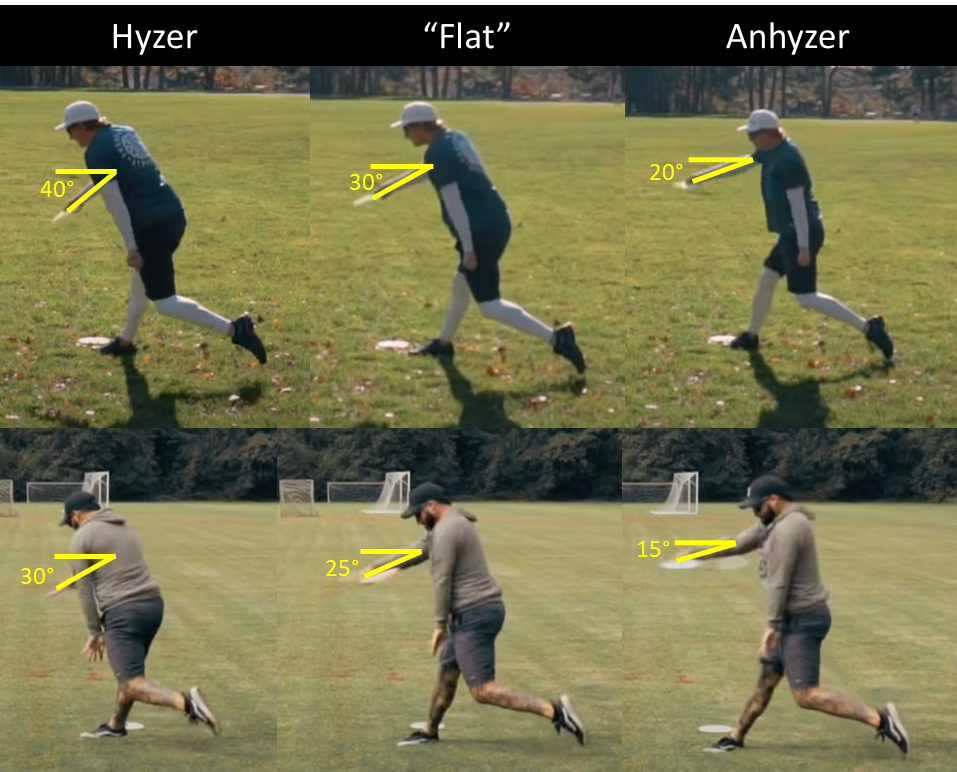
Yes, I think that's an important variable too. It's interesting how it differs somewhat from Gibsons even though they are throwing a similar "anhyzer-on-hyzer" angle posturally. Hmmm.Simon's anhyzer here looks like a different grip alignment compared to his others.
On the point of 'we are not riged bodies'... totally agree.I disagree with that concept - sent Trebuchet a few DMs about it. A static front leg and dropping/rotating the trailside does absolutely nothing but pull you backwards off balance. Try it swinging something heavy like a kettlebell.
You need a point on the ground to establish a stable axis of rotation. We rotate around our center of mass/gravity, not the spine. It can get weird talking about some math concepts in the throw, we are not rigid bodies.

So on the left they are tipping over their brace without their balance being over their brace? Or it's just too early in the sequence to see that?Blue line is approximate player balance in transition and then the plant step from head to toe. Curved arrows are the principal direction of the shift in the axis in the north-south direction. This is a very common fundamental balance error. Liked how @sidewinder22 summarizes the opposite of Tipping Over as "Shifting Underneath" so I'm sticking with it.
View attachment 337932
Look at how the angle of the disc vs the forearm changes from left to right.I was curious about the angulation of the arm from ~wrist to elbow entering the hit and thought some would find this interesting.
If you go back through the OT montages and look at lower power shots, the Anhyzer angle looks much more like Brinster's here. But when Simon and Drew go for max power they're basically swinging on shallow hyzers. The disc has slightly less angulation than that entering the hit, but they're relying on gravity entering the hit and allowing the disc to go quickly into a slight turnover for "Anhyzer."

Yeah, I was trying to get the frame closest to when the nose is "smashing through" the release point, it was a little dodgy but I could get close.Look at how the angle of the disc vs the forearm changes from left to right.
When my I don't cock my wrist down, I end up throwing noob hyzers. It appears both throw anhyzers that way.
Is what I think I'm seeing just that the anhyzer frames were taken a fraction of a second earlier in the throw? Are they both cranking the nose down just before it rips out?
Or since they have so much power, they intentionally throw flippy (for them) discs nose up?
Or is that more due to different setup angle to throw hyzer vs anhyzer? You can clearly see more of each player's back in the leftmost frames. Not sure if that's timing or orientation.
Damn that's a lot of questions.

This is a good question as usual. There's a clue in the leading leg:So on the left they are tipping over their brace without their balance being over their brace? Or it's just too early in the sequence to see that?
Edit: I was thinking their balance is indicated as on the back leg and so the plant is de-weighted which makes it seem like they can't tip over it but I can see how the angle of the balance line suggests a tip forward is about to happen, but at the same time it looks like a position where a strong brace could stop a tipping over.

Ryan Sheldon at/near release